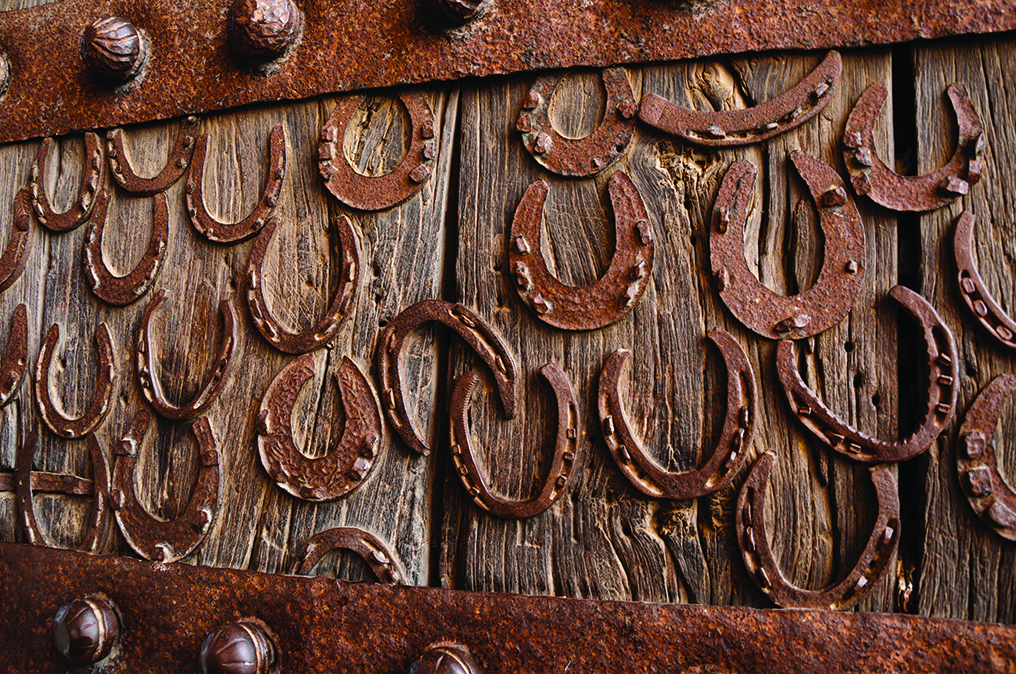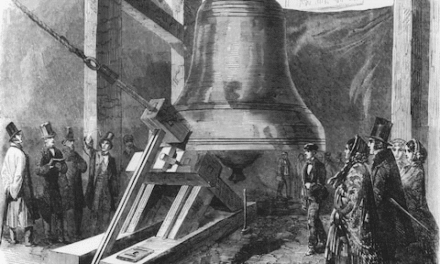Many people collect old horseshoes and antique horse equipment, but what is the legend of the lucky horseshoe, and what are the Irish origins that still have people hanging a horseshoe above a door frame, even in modern times?
The folklore surrounding the story of a lucky horseshoe begins in the 10th century with an English abbott named Dunstan, who later became Archbishop of Canterbury and was cannonized a saint. 
The legend says the devil visited the ancient blacksmith and asked for horseshoes for his horse.
Although disguised, the saint recognized the devil and nailed a red hot shoe to one of the devil’s hooves instead, using seven nails, a symbol of good luck and faith.
The devil cried out in pain over the hot implement, but Saint Dunstan said he would only remove it on one condition-that the devil would have to respect the ancient blacksmith’s symbol, and not enter any dwelling to cast evil doings into a home, as long as a horseshoe was hung over the door.
There is also folklore of the witch involved in this old tale and tradition. It was thought witches, back in those times, were afraid of horses and the shoes they wore, as iron was considered sacred and lucky.
It was told in old Irish traditions that witches would not pass through a door if a horseshoe was hung, upside down, to collect good luck in the curve.
People so believed in this legend that they would nail horseshoes to coffins to keep evil spirits of the dearly departed from coming out of their coffins and haunting, even after death.
Being a blacksmith was also considered a lucky trade, as they worked with iron, an element that was considered magical, as it could go through tests of fire and stay strong.
As a nod to the Saint Dunstan story, many horseshoes still have seven nails in them, a reference to seven being a lucky number.
There is some discussion about how to hang a lucky horseshoe above a door. Some people hang the shoe facing upwards in a U-shape, an old Irish tradition that is said to collect good luck and keep it in the bowl of the shoe. Others believe if you hang it upside down in the U-shape, that the luck will flow out of the shoe and disperse throughout the home, and down onto the people who pass under it.
When collecting antique horseshoes, there are a few things to know.
In the 19th century, for example, a game of throwing horseshoes was invented, but the shoes used in this game weren’t always actually ever used on horses, but, instead, made just to pitch.
Antique dealers look for particular things when collecting horseshoes.
Shoes with six holes in them are usually quite old, some dating back before the 17th century in some cases.
Iron shoes are antique as well, because modern shoes are made of steel.
To determine if a horseshoe is in fact old and iron, some people take an angle grinder and create a spark on the shoe.
If the spark is dull and red, it is probably old iron, forged by hand by a blacksmith. If the spark is bright and more of a blue color, the shoe is probably steel.
People to this day still hang horseshoes above their doorways for good luck, dating back to the old world traditions, and they also collect shoes from wars, military service, and racing.
Whatever the collection needs, horseshoes still hold their mystery, luck and mystic, even in modern day antique trading around the world.
(Editor’s note: DeeDee Wood is the owner of Black Cat Curiosities, an online antiques research and sales venue.)




